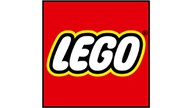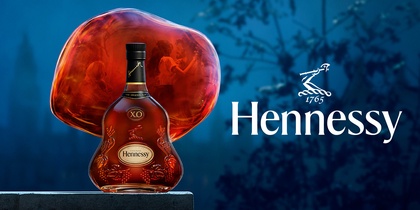







A trustworthy tool for your creative journey, the Nikon Z5 II upgrades its predecessor with improved processing speed, subject recognition AF, and low-light performance. With a new color preset button, an ultra-bright viewfinder, and easy sharing options, the camera offers a step up to creators seeking full-frame imagery. - Excellent autofocus performance, including AF of nine subject types powered by deep learning-based AI technology and AF detection range down to -10 EV[1].- More creative expression with Imaging Recipes and Flexible Color Picture Control.- Dedicated Picture Control button for one-step access to in-camera color presets.- Powerful vibration reduction with an effect equivalent to 7.5 stops in the center[2] and 6.0 stops at the periphery[2].- Impressive high-sensitivity performance at a standard ISO of up to 64000 for stills and 51200 for video, thanks to the combination of the full-frame- back-illuminated CMOS sensor and the power of the EXPEED 7 image-processing engine.- Flexible in-camera video recording options with 12-bit N-RAW, 10-bit H.265, and 8-bit H.264.- Full HD/120p for flexibility to create 4x slow motion videos in 8-bit H.264.- Equipped with a bright, 3000 cd/m2 EVF inherited from higher-end models for improved shooting visibility. Autofocus You Can Trust Using inherited algorithms and deep learning technology from the Z9, including sophisticated Subject Detection for nine different subject types, the Z5 II can recognize a variety of distinct subject types, ranging from humans to animals to airplanes to bicycles. The popular dedicated Bird Detection mode is also featured. When working in Auto-Area AF, these subjects will automatically be detected, focused on, and tracked to ensure sharp focus when the subject is moving across the frame.Pre-Release CaptureThe EXPEED 7 processor also unlocks Pre-Release Capture, a feature that helps make decisive moment shots easier by recording frames in a burst of up to 30 fps for up to a second prior to actually releasing the shutter. When this feature is activated, burst shooting will commence when the shutter is half-pressed, and the buffer will retain the frames after fully pressing the shutter.
UHD 4K Video Recording Capable of recording more than just stills, the Z5 II has improved its video capture abilities as well, now supporting UHD 4K video recording up to 60 fps and Full HD recording up to 120 fps along with recording time limits up to two hours, a video self-timer feature, built-in electronic Vibration Reduction, and the ability to save movie files to the in-camera memory cards or an optional external recorder via HDMI out. In-camera time-lapse shooting is also possible with the ability to produce a finished UHD 4K video file directly from the camera. The Z5 II also features a Product Review mode and is UAC and UAV compliant for live web-streaming. Additionally, you can now record 10-bit video internally with Nikon's N-Log LUT and use four new RED LUTs as well.
Sensor-Shift Vibration Reduction Built into the body is a 5-axis sensor-shift Vibration Reduction (VR) mechanism that compensates for up to five stops of stabilization regardless of the lens in use. With compatible lenses, up to 7.5 stops of stabilization is possible. Also, benefitting video recording, Electronic VR is available to help steady footage to suit handheld shooting.
Color Control for Creators Nikon has added a Picture Control button atop the Z5 II to make access to its 31 built-in presets available even in Auto mode. The color presets can now be overlaid in the rear LCD screen, giving you the ability to visualize the color shifts as you create. Creator Recipes built by fellow Nikon shooters are available through the Nikon Imaging Cloud and can be downloaded and integrated alongside the presets. [1]In Photo mode using Single-servo AF (AF-S), Single-point AF (center), at ISO 100 equivalent and a temperature of 20°C/68°F with a f/1.2 lens.[2]Based on CIPA 2024 Standard. Yaw/Pitch/Roll performance when using the NIKKOR Z 24-120mm f/4 S (telephoto end, NORMAL mode).
- Type of camera
- Digital camera with support for interchangeable lenses
- Lens mount
- Nikon Z mount
- Compatible lenses
- Z mount NIKKOR lenses
- F mount NIKKOR lenses (mount adapter required; restrictions may apply)
- Effective pixels
- 24.5 million
- Type
- 35.9 x 23.9 mm CMOS sensor (full-frame/FX-format)
- Total pixels
- 25.28 million
- Dust-reduction system
- Image sensor cleaning, Image Dust Off reference data (requires NX Studio)
- Image size (pixels)
- [FX (36 x 24)] selected for image area: 6048 x 4032 (Large: 24.4 M), 4528 x 3024 (Medium: 13.7 M), 3024 x 2016 (Small: 6.1 M)
- [DX (24 x 16)] selected for image area: 3984 x 2656 (Large: 10.6 M), 2976 x 1992 (Medium: 5.9 M), 1984 x 1328 (Small: 2.6 M)
- [1:1 (24 x 24)] selected for image area: 4032 x 4032 (Large: 16.3 M), 3024 x 3024 (Medium: 9.1 M), 2016 x 2016 (Small: 4.1 M)
- [16:9 (36 x 20)] selected for image area: 6048 x 3400 (Large: 20.6 M), 4528 x 2544 (Medium: 11.5 M), 3024 x 1696 (Small: 5.1 M)
- File format (image quality)
- NEF (RAW): 14 bit; choose from lossless compression, high efficiency?, and high efficiency options
- JPEG: JPEG-Baseline compliant with fine (approx. 1 : 4), normal (approx. 1 : 8), or basic (approx. 1 : 16) compression; size-priority and optimal-quality compression available
- HEIF: Supports fine (approx. 1 : 4), normal (approx. 1 : 8), or basic (approx. 1 : 16) compression; size-priority and optimal-quality compression available
- NEF (RAW)+JPEG: Single photograph recorded in both NEF (RAW) and JPEG formats
- NEF (RAW)+HEIF: Single photograph recorded in both NEF (RAW) and HEIF formats
- Picture Control system
- Auto, Standard, Neutral, Vivid, Monochrome, Flat Monochrome, Deep Tone Monochrome, Portrait, Rich Tone Portrait, Landscape, Flat, Creative Picture Controls (Dream, Morning, Pop, Sunday, Somber, Dramatic, Silence, Bleached, Melancholic, Pure, Denim, Toy, Sepia, Blue, Red, Pink, Charcoal, Graphite, Binary, Carbon); selected Picture Control can be modified; storage for Custom Picture Controls
- Note: Choice of Picture Controls is restricted to Standard, Monochrome, and Flat when HLG is selected for tone mode during still photography.
- Media
- SD (Secure Digital), SDHC and SDXC memory cards (SDHC and SDXC memory cards are UHS-II compliant)
- Dual card slots
- Either card can be used for overflow or backup storage, for separate storage of NEF (RAW) and JPEG or HEIF pictures, or for storage of duplicate JPEG or HEIF pictures at different sizes and image qualities; pictures can be copied between cards
- Viewfinder
- 1.27-cm/0.5-in. approx. 3690k-dot (Quad VGA) OLED electronic viewfinder with color balance, and auto and 18-level manual brightness controls
- Frame coverage
- Approx. 100% horizontal and 100% vertical
- Magnification
- Approx. 0.8x (50 mm lens at infinity, -1.0 m-1)
- Monitor
- 8-cm/3.2-in., approx. 2100k-dot vari-angle TFT touch-sensitive LCD with 170° viewing angle, approximately 100% frame coverage, and color balance and 15-level manual brightness controls
- Type
- Electronically-controlled vertical-travel focal-plane mechanical shutter; electronic front-curtain shutter; electronic shutter
- Speed
- 1/8000 to 30 s (choose from step sizes of 1/3, 1/2, and 1 EV, extendable to 900 s in mode M), Bulb, Time
- Flash sync speed
- Flash synchronizes with shutter at speeds of 1/200 s or slower; faster sync speeds are supported with auto FP high-speed sync
- Release modes
- Single frame, continuous low-speed, continuous high-speed, continuous high-speed (extended), high-speed frame capture + with Pre-Release Capture, self-timer
- Approximate frame advance rate[1]
- Continuous low-speed: Approx. 1 to 7 fps
- Continuous high-speed[2]
- -Approx. 7.8 fps (when the shutter type is set to [Auto] or [Mechanical shutter])
- -Approx. 9.4 fps (when the shutter type is set to [Electronic front-curtain shutter])
- -Approx. 10 fps (when silent mode is set to [ON])
- Continuous high-speed (extended)[2]
- -Approx. 14 fps
- -Approx. 15 fps (when silent mode is set to [ON])
- High-speed frame capture + (C15): Approx. 15 fps
- High-speed frame capture + (C30): Approx. 30 fps
- [1]Maximum frame advance rate as measured by in-house tests.
- [2]When using an image quality setting other than NEF (RAW) or NEF (RAW) +.
- Metering system
- TTL metering using camera image sensor
- Metering mode
- Matrix metering
- Center-weighted metering: Weight of 75% given to 12 or 8-mm circle in center of frame or weighting can be based on average of entire frame
- Spot metering: Meters circle with a diameter of approx. 4 mm centered on selected focus point
- Highlight-weighted metering
- Metering range (ISO 100 equivalent, f/2.0, 20°C/68°F)
- -4 to +17 EV
- ISO sensitivity
- (Recommended Exposure Index)
- ISO 100 to 64000 (choose from step sizes of 1/3 and 1 EV); can also be set to approx. 0.3, 0.7, or 1 EV (ISO 50 equivalent) below ISO 100 or to approx. 0.3, 0.7, 1, or 1.7 EV (ISO 204800 equivalent) above ISO 64000; auto ISO sensitivity control available
- Note: ISO sensitivity is limited to 400 to 64000 when HLG is selected for tone mode
- Active D-Lighting
- Auto, Extra high, High, Normal, Low, and Off
- Multiple exposure
- Add, average, lighten, darken
- Other options
- HDR overlay, photo flicker reduction, high-frequency flicker reduction
- Type
- Hybrid phase-detection/contrast AF with AF assist
- Detection range (in photo mode, AF-S, single-point AF with the center focus point selected, ISO 100 equivalent, f/1.2 lens, 20°C/68°F)
- -10 to +19 EV
- Focus points
- 273 focus points (single-point AF), 299 focus points (auto-area AF)
- *Number of focus points available in photo mode with FX selected for image area.
- AF-area modes
- Pinpoint (available in photo mode only), single-point, dynamic-area (S, M, and L; available in photo mode only), wide-area (S, L, C1, and C2), and auto-area AF; 3D-tracking (available in photo mode only); subject-tracking AF (available in video mode only)
- Camera on-board VR
- 5-axis image sensor shift
- Lens on-board VR
- Lens shift (available with VR lenses)
- Flash control
- TTL: i-TTL flash control; i-TTL balanced fill-flash is used with matrix, center-weighted, and highlight-weighted metering, standard i-TTL fill-flash with spot metering
- Flash modes
- Front-curtain sync, slow sync, rear-curtain sync, red-eye reduction, red-eye reduction with slow sync, off
- Nikon Creative Lighting System (CLS)
- i-TTL flash control, optical Advanced Wireless Lighting, modeling illumination, FV lock, Color Information Communication, auto FP high-speed sync
- White balance
- Auto (3 types), natural light auto, direct sunlight, cloudy, shade, incandescent, fluorescent (3 types), flash, choose color temperature (2500 to 10,000 K), preset manual (up to 6 values can be stored), all with fine-tuning
- Bracketing types
- Exposure and/or flash, white balance, and ADL
- Metering system
- TTL metering using camera image sensor
- Metering mode
- Matrix, center-weighted, or highlight-weighted
- Frame size (pixels) and frame rate (RAW video)
- [FX] 4032 x 2268: 30p/25p/24p
- [DX] 3984 x 2240: 30p/25p/24p
- Note: Actual frame rates for 30p, 25p, and 24p are 29.97, 25, and 23.976 fps respectively.
- File format
- NEV, MOV, MP4
- Video compression
- N-RAW (12 bit), H.265/HEVC (8 bit/10 bit), H.264/AVC (8 bit)
- Audio recording format
- Linear PCM (48 KHz, 24 bit, for videos recorded in NEV or MOV format) or AAC (48 KHz, 16 bit, for videos recorded in MP4 format)
- Audio recording device
- Built-in stereo or external microphone can be used; sensitivity adjustable; attenuator, frequency response, and wind noise reduction functions
- Exposure compensation
- Range: -3 to +3 EV in steps of 1/3 or 1/2 EV
- ISO sensitivity (Recommended Exposure Index)
- Mode M: Manual selection (ISO 100 to 51200; choose from step sizes of 1/6, 1/3 and 1 EV); with additional options available equivalent to approximately 0.3, 0.7, 1, or 2 EV (ISO 204800 equivalent) above ISO 51200; auto ISO sensitivity control (ISO 100 to Hi 2.0) available with selectable upper limit
- Note: ISO sensitivity is limited to 400 to 51200 when HLG is selected for tone mode. ISO sensitivity is limited to Lo 0.3 to 2.0 and 800 to 51200 when N-Log is selected for tone mode.
- Modes P, S, A: Auto ISO sensitivity control (ISO 100 to Hi 2.0) with selectable upper limit
- Auto mode: Auto ISO sensitivity control (ISO 100 to 51200)
- Other options
- Time-lapse video recording, electronic vibration reduction, time codes, N-Log and HDR (HLG) video, wave-form display, red REC frame indicator, video recording display zoom (50%, 100%, 200%, and 400%), extended shutter speeds (modes S and M), and dual-format (proxy-video) recording for RAW video; option to view video recording info available via i menu; Hi-Res Zoom
- USB
- Type C SuperSpeed USB connector; connection to built-in USB ports is recommended
- HDMI output
- Type-D HDMI connector
- Audio input
- Stereo mini-pin jack (3.5 mm diameter; plug-in power supported)
- Audio output/remote cord
- Stereo mini-pin jack (3.5 mm diameter)
- MC-DC3 Remote Cord can be used.
- *The connector function can be set to either auto switch or fixed to headphones.
- Wi-Fi
- Available
- Bluetooth
- Available
- Battery
- One EN-EL15c Rechargeable Li-ion Battery
- *EN-EL15b and EN-EL15a batteries can be used in place of the EN-EL15c. Note, however, that fewer pictures can be taken on a single charge than with the EN-EL15c. EH-8P AC Adapters can be used to charge EN-EL15c and EN-EL15b batteries only.
- Battery pack
- MB-N14 and MB-N11 Power Battery Packs (available separately) taking two EN-EL15c batteries
- *EN-EL15b and EN-EL15a batteries can be used in place of the EN-EL15c. Note, however, that fewer pictures can be taken on a single charge than with the EN-EL15c.
- AC adapter
- EH-8P AC Adapters (available separately); require supplied USB cable featuring Type-C connectors at both ends
- EH-5d, EH-5c, and EH-5b AC Adapters; requires EP-5B Power Connector (available separately)
- Tripod socket
- 0.635 cm; 1/4 in., ISO 1222
- Dimensions (W x H x D)
- Approx. 134 x 100.5 x 72 mm/5.3 x 4 x 2.9 in.
- Weight
- Approx. 700 g/1 lb. 8.7 oz. with battery and memory card but without body cap and accessory shoe cover; approx. 620 g/1 lb. 5.9 oz. (camera body only)
- Operating environment
- Temperature: 0°C to 40°C (32°F to 104°F); humidity: 85% or less (no condensation)
As an international traveller you are entitled to bring a certain amount/value of goods that are free of Customs duty and exempt Goods and Services tax (GST) into New Zealand. This is called your duty free allowance and personal goods concession. It is important to review these for any purchases you make on The Mall.
Your duty free allowance entitles you to bring into New Zealand the following quantities of alcohol products free of customs duty and GST provided you are over 17 years of age. You do need to be 18 years or over to purchase.
- Up to six bottles (4.5 litres) of wine, champagne, port or sherry or
- Up to twelve cans (4.5 litres) of beer
- And three bottles (or other containers) each containing not more than 1125ml of spirits, liqueur, or other spirituous beverages
Goods other than alcohol and tobacco, whether purchased overseas or purchased duty free in New Zealand, that have a combined total value not exceeding NZ$700 may also be brought as part of your personal goods concession.
When travelling overseas there are legal limits on the amount of duty free alcohol and other goods you can take with you. These amounts will vary depending on the country you are flying into. We always recommend you check the latest limits and exemptions.
Your order can be picked up at an Auckland Airport Collection Point. There is one in departures and one at arrivals in the international terminal. Alternatively, if you are arriving between 11pm and 6am you will be able to collect your order from our lockers. See map
Please bring your order confirmation email and your passport. If you are collecting from lockers you will have been sent an email with your access code, be sure to have this on you in order to collect your order.
If you’re departing Auckland Airport, we recommend that you come to the Auckland Airport Collection Point at least 60 minutes before your flight. If you miss your pickup time or your flight details have changed please let us know as soon as possible.
When you collect your order you will have the opportunity to inspect the items and sign for them.
If you need to return an item, our Collection Point team are there to help you. If you are collecting after hours please return the item to your locker and our team will be in touch as soon as possible. You may also like to view our Returns & refunds which provides information on how this works and outlines the individual retailer's returns and refunds policies.
After Hours Collections
If your order needs to be collected after the Auckland Airport Collection Point desk is closed, your order will be placed in the lockers next to the desk. All the details you will need to collect your order will be provided in your Order Confirmation and Ready to Collect Email.










